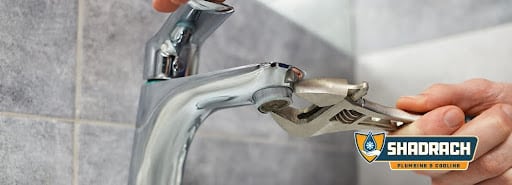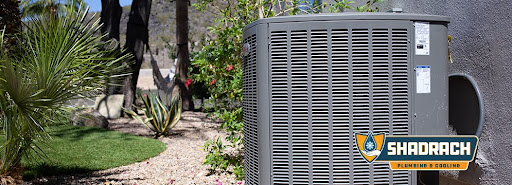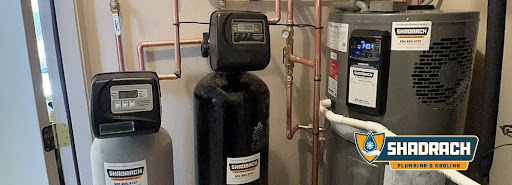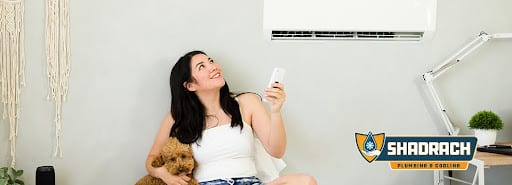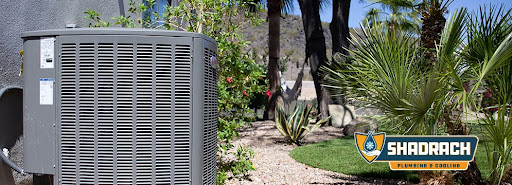Did you know that Americans spend about 90% of our time inside and that the indoor air has anywhere from 2 to 5 times more pollutants than outside air? Many people don’t realize the fact that the air inside their homes can sometimes be more polluted than the air outside.
Do you ever wonder about the quality of the air you breathe inside your own home? Poor indoor air quality can lead to health problems and discomfort for you and your family. But fear not, there are simple steps you can take to improve indoor air quality and breathe easier.
In this week’s blog, Shadrach Plumbing & Cooling will share how you can improve indoor air quality using methods such as air cleaners, air filtration systems, air purification systems, HEPA filters, UV lights, and more. We’ll also touch on why indoor air quality is important, its impact on health, and the role it plays in your overall well-being.
Understanding Indoor Air Quality
Before we talk about solutions, it’s important that we get familiar with what indoor air quality (IAQ) actually means. Indoor air quality refers to the health and pureness of the air inside your home, including its cleanliness and safety. It’s essential to maintain good IAQ because of the amount of time we spend indoors. Poor indoor air quality can have adverse effects on our health.
The Dangers of Poor Indoor Air Quality
Poor indoor air quality can lead to various health problems, including allergies, asthma, respiratory infections, and even more severe issues like heart disease and lung cancer. Indoor air pollution can come from a variety of sources, cleaning supplies, cooking, smoking, and even outdoor air pollution that infiltrates your home. It can also result from the buildup of indoor air pollutants such as dust, pet dander, mold, and volatile organic compounds (VOCs) released by household items, materials, and even some beauty products.
The Role of Air Quality Standards
To measure indoor air quality, experts use air quality standards that outline acceptable levels of various pollutants and gasses. These standards help us understand when the air inside our homes is safe to breathe or when it poses a risk to our health. It’s important to be aware of these standards to ensure that your indoor environment meets the necessary criteria.
Shadrach Cooling & Plumbing will test your IAQ. You can quickly learn the condition of your home’s indoor air. Our trained technicians will offer solutions to improve your IAQ that line up with your personal household budget. Contact Shadrach today to learn more.
Air Cleaners: Your First Line of Defense
One effective way to improve indoor air quality is by using air cleaners. Air cleaners are devices designed to remove particles and pollutants from the air, making it cleaner and safer to breathe. There are various types of air cleaners available, but two common ones are HEPA filters and UV lights.
HEPA Filters: Trapping Tiny Particles
HEPA filters, or High-Efficiency Particulate Air filters, are excellent at capturing tiny particles like dust, pollen, pet dander, and even some bacteria and viruses. These filters are highly efficient and can significantly improve indoor air quality by trapping airborne particles that can trigger allergies and respiratory issues.
To use HEPA filters effectively, you can place them in your home’s heating and cooling system or use standalone air purifiers equipped with HEPA filters. Make sure to follow the manufacturer’s instructions for filter replacement, as they need regular maintenance to remain effective.
UV Lights: Fighting Microorganisms
UV lights, specifically UV-C lights, are another weapon in the battle against poor indoor air quality. These lights emit ultraviolet radiation that can kill or deactivate microorganisms like bacteria and viruses. By incorporating UV lights into your HVAC system or using specialized air purification systems, you can reduce the risk of illness caused by airborne pathogens.
Air Filtration Systems: A Comprehensive Solution
While HEPA filters and UV lights can be helpful on their own, combining them in an air filtration system can provide a more comprehensive solution for improving indoor air quality. Air filtration systems typically consist of multiple layers of filtration, including pre-filters, HEPA filters, and UV-C lights.
These systems work together to remove both particulate matter and microorganisms from the air, giving you cleaner and safer indoor air. They are especially beneficial if you or your family members have allergies or respiratory conditions, as they can significantly reduce the allergens and irritants in your home.
Air Purification Systems: Targeted Cleaning
In addition to air filtration systems, air purification systems can also be a valuable asset in your quest for better indoor air quality. Air purifiers use various technologies, including HEPA filters, activated carbon filters, and ionizers, to target specific pollutants and odors in the air.
Activated carbon filters are effective at removing odors from cooking, smoking, and pet odors, while ionizers can help remove particles like dust and pollen. These systems can be particularly useful if you have specific indoor air quality concerns beyond just allergens and microorganisms.
Practical Tips for Improving Indoor Air Quality
In addition to using air cleaners, there are several other steps you can take to improve indoor air quality in your home:
Ventilation: Proper ventilation is essential to bring in fresh outdoor air and remove indoor pollutants. Open windows when weather permits and use exhaust fans when cooking or using cleaning supplies that release fumes.
Control Humidity: Maintaining the right level of humidity (around 30-50%) can prevent mold growth and dust mites. Use a dehumidifier in damp areas and ensure good ventilation to manage indoor humidity.
Regular Cleaning: Keep your home clean by dusting, vacuuming, and mopping regularly. Use a vacuum cleaner with a HEPA filter to trap dust and allergens effectively.
Reduce Smoking: If you smoke indoors, consider quitting or designating an outdoor smoking area to prevent the buildup of harmful indoor pollutants like secondhand smoke.
Choose Low VOC Products: When selecting cleaning supplies, paints, and furniture, opt for products with low volatile organic compound (VOC) emissions to reduce indoor air pollution.
Monitor Carbon Monoxide: Install carbon monoxide detectors in your home to detect this odorless gas, which can be produced by malfunctioning heating systems and appliances.
Shadrach Offers a Variety of IAQ services
Improving indoor air quality in your home is essential for the health and well-being of your family. By taking simple steps like using air cleaners, maintaining good ventilation, and being mindful of indoor air quality standards, you can create a safer and more comfortable living environment. Remember that the air you breathe indoors can have a significant impact on your health, so it’s worth the effort to ensure it’s clean and pollutant-free.
To stay informed about air quality issues in your area, you can check resources like the Fountain Hills Air Quality and Dust Control website and the Cronkite News article “Maricopa County Air Quality Raises Health Concerns with Affected Minority Communities”. Keeping up with local air quality news can help you make informed decisions about improving the air quality in your home and protecting your family’s health.
Shadrach Cooling & Plumbing offers a variety of IAQ improvement products and services. Make an appointment today with one of our professional technicians. We’ll test your indoor air to learn the specific causes of your home’s poor IAQ and provide solutions to have you breathing easier!



